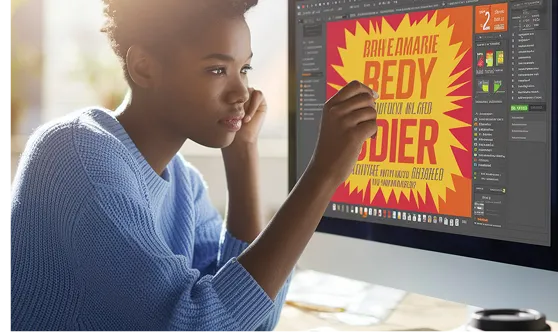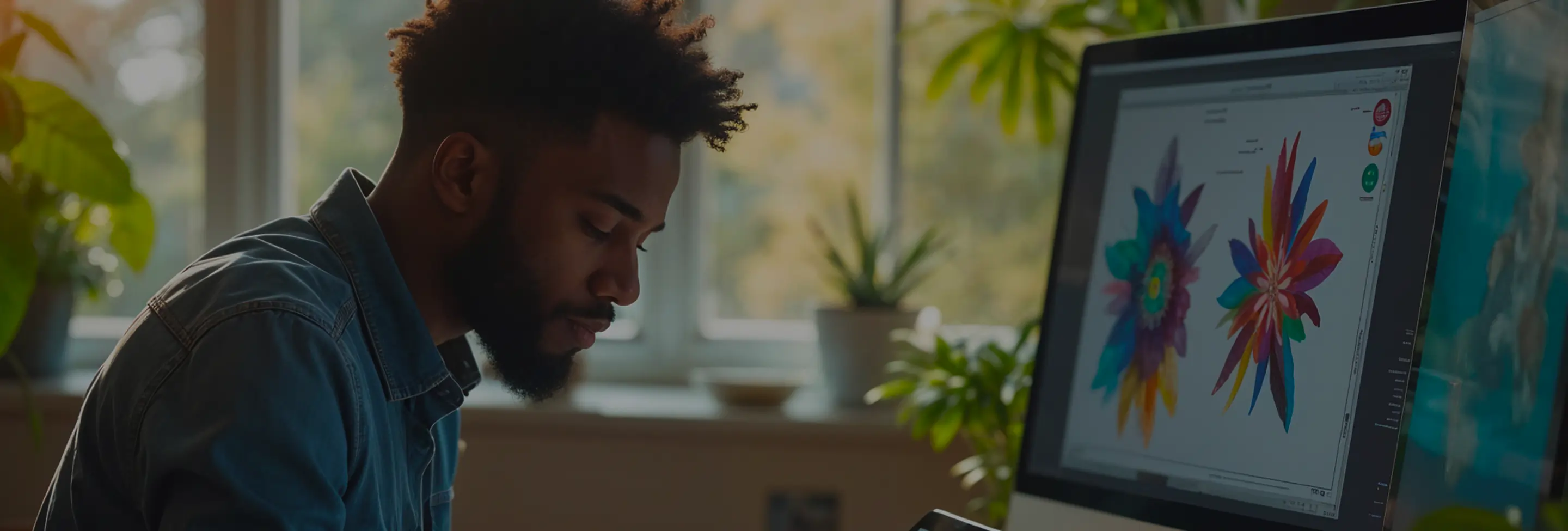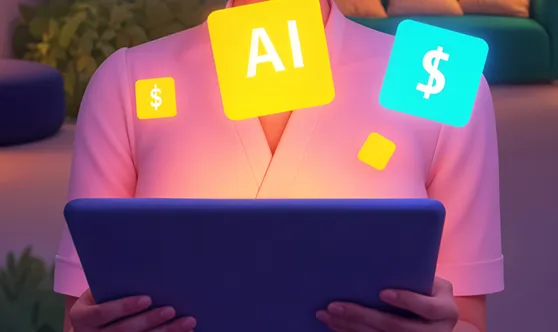
After analyzing the design approaches of over 1,000 non-profit organizations, these 15 graphic design strategies have consistently driven engagement and amplified mission impact. This compilation addresses the unique challenges non-profits face in visually communicating their values, ensuring that every design decision contributes to meaningful outreach and support.
Answer: Non-profits should focus on clarity, consistency, and emotional resonance in their graphic design. Clarity ensures that messages are easily understood, consistency maintains brand recognition across various platforms, and emotional resonance connects with the audience's values and motivations. Utilizing a cohesive color palette, readable typography, and unified imagery helps in establishing a strong and trustworthy brand identity.
Example: The World Wildlife Fund (WWF) uses a consistent color scheme of black and white with a splash of green in their panda logo, ensuring immediate recognition and conveying their environmental focus.
Answer: While both sectors aim to engage audiences, non-profits emphasize storytelling and mission-driven content over sales and profitability. Graphic design for non-profits often focuses on inspiring action, raising awareness, and building community, whereas for-profits may prioritize brand promotion and product features. Non-profit designs typically incorporate elements that highlight their cause, such as impactful imagery and compassionate messaging.
Common Misconception: Some believe that non-profits cannot compete with for-profits in design quality. In reality, strategic and thoughtful design can effectively convey a non-profit's mission without the need for extensive budgets.
Answer: Non-profits can convey their mission by integrating key elements of their cause into visual elements. This includes using symbols that represent their mission, selecting colors that evoke the desired emotional response, and showcasing real stories or beneficiaries in imagery. Clear and concise messaging, combined with compelling visuals, ensures that the audience understands and connects with the mission.
Actionable Solution: Develop a mission statement graphic that incorporates the organization's logo, a representative image, and a succinct tagline that encapsulates the mission.
Answer: Storytelling is pivotal in creating an emotional connection with the audience. Through narratives, non-profits can illustrate the impact of their work, highlight individual stories, and demonstrate the change they aim to effect. Graphic design supports storytelling by visually representing these narratives, making them more relatable and memorable.
Real-World Example: Charity: Water uses before-and-after photos in their campaigns to tell the story of communities gaining access to clean water, effectively illustrating the tangible impact of donations.
Answer: To balance multiple messages, non-profits should prioritize clarity and hierarchy in their design. This involves organizing content so that the most critical messages stand out while secondary information supports them. Utilizing consistent templates and modular design elements can help manage various campaigns without causing visual clutter.
Practical Example: Creating a modular newsletter template where each section is dedicated to a different campaign but follows a unified design language ensures cohesiveness and ease of navigation.
Answer: Non-profits can utilize tools like Canva, which offers a free tier with extensive templates and design elements. Adobe Spark is another affordable option, providing user-friendly interfaces for creating professional graphics. Additionally, open-source software like GIMP and Inkscape offers robust features without the cost associated with premium software.
Configuration Sample: Setting up Canva for team collaboration by enabling shared folders and templates ensures consistency across all designs created by different team members.
Answer: Non-profits can utilize free resources such as royalty-free image libraries (e.g., Unsplash, Pexels), free vector graphics from sites like Freepik, and open-source typography from Google Fonts. These resources can supplement design efforts without incurring additional costs, allowing non-profits to produce professional-quality visuals on a limited budget.
Troubleshooting Tip: Always check the licensing agreements of free resources to ensure they can be used for non-commercial purposes and properly attribute creators when required.
Answer: While there isn't software exclusively tailored for non-profits, many design tools offer discounts or free access to non-profit organizations. Adobe provides discounted rates for Adobe Creative Cloud to eligible non-profits, and platforms like Canva offer non-profit partnerships that include additional resources and support.
Actionable Solution: Apply for non-profit discounts through software providers like Adobe or Canva to access premium features at reduced costs, enhancing the quality of your design projects.
Answer: Non-profits can maximize their design budgets by prioritizing essential design needs, utilizing free or discounted tools, and leveraging volunteer or pro-bono design talent. Implementing a clear design strategy ensures that every dollar spent contributes directly to impactful visual communication. Additionally, repurposing existing assets and templates can save time and resources.
Actionable Solution: Create a design brief that outlines the most critical design projects and allocate the budget to those areas first, ensuring maximum impact with limited funds.
Answer: Non-profits can source volunteer designers through platforms like VolunteerMatch, idealist.org, or by reaching out to local universities and design schools. Hosting design challenges or offering recognition through awards can also attract volunteer talent. Building partnerships with design firms willing to offer pro-bono services can provide high-quality design support.
Real-World Example: A small environmental non-profit partnered with a local art school, providing students with real-world projects while the organization received professional-quality designs without financial expenditure.
Answer: Non-profits can ensure quality by developing clear brand guidelines that dictate color schemes, typography, and logo usage. This consistency allows multiple team members or volunteers to produce cohesive designs. Additionally, investing in basic design training for staff can empower them to create acceptable quality graphics using user-friendly tools like Canva.
Actionable Solution: Develop a comprehensive brand style guide that includes examples of approved design elements and usage instructions to maintain consistency across all visual materials.
Answer: Data visualization can effectively communicate complex information in an accessible and engaging manner. Non-profits can use infographics, charts, and graphs to illustrate the impact of their work, trends in their area of focus, or distribution of resources. Clear and visually appealing data visuals can enhance transparency and build trust with stakeholders.
Code Example: Using D3.js, a JavaScript library, non-profits can create interactive and customizable data visualizations for their websites.
<!DOCTYPE html>
<html>
<head>
<script src="https://d3js.org/d3.v6.min.js"></script>
</head>
<body>
<div id="chart"></div>
<script>
// Sample D3.js code to create a simple bar chart
const data = [30, 86, 168, 281, 303, 365];
d3.select('#chart')
.selectAll('div')
.data(data)
.enter()
.append('div')
.style('width', d => d + 'px')
.text(d => d);
</script>
</body>
</html>
Answer: Designing responsive graphics involves creating visuals that adapt seamlessly to various screen sizes and devices. Best practices include using scalable vector graphics (SVGs) for clarity at any size, testing designs across different devices, and employing flexible layouts that adjust element positions and sizes based on screen dimensions. Ensuring that text remains readable and images retain their impact across platforms is crucial.
Practical Example: Designing social media graphics in multiple resolutions to accommodate platforms like Instagram, Facebook, and Twitter ensures optimal display regardless of where the content is viewed.
Answer: Accessibility in graphic design ensures that visual content is usable by individuals with disabilities. Non-profits should use high-contrast color schemes for better visibility, provide alternative text for images, utilize readable fonts, and ensure that designs are navigable via screen readers. Incorporating accessibility standards like the Web Content Accessibility Guidelines (WCAG) enhances inclusivity and broadens the audience reach.
Actionable Solution: Use tools like Adobe Acrobat’s accessibility checker or the WAVE Web Accessibility Evaluation Tool to assess and improve the accessibility of your graphic designs.
Answer: Non-profits can incorporate animations, videos, and interactive elements to create dynamic and engaging multimedia content. Techniques such as motion graphics can highlight key messages, while interactive infographics allow users to explore data in a hands-on manner. Utilizing storytelling through video can capture attention and convey emotions more effectively than static images.
Real-World Example: The American Red Cross uses animated videos to explain disaster response processes, making complex information more digestible and engaging for their audience.
Answer: Common pitfalls include overcrowding designs with too much information, inconsistent branding, neglecting mobile optimization, and failing to prioritize clarity over creativity. Overcomplicating designs can obscure the message, while inconsistent branding can confuse the audience. Ensuring designs are simple, clear, and aligned with the brand enhances effectiveness.
Answer: To increase engagement, non-profits should analyze which types of content resonate most with their audience and adjust their strategies accordingly. Incorporating compelling calls to action, using eye-catching visuals, and leveraging storytelling can enhance engagement. Additionally, optimizing posting times and engaging with the audience through comments and shares can improve visibility and interaction.
Troubleshooting Tip: Conduct A/B testing with different design variations to identify which elements drive higher engagement and refine future designs based on the results.
Answer: Maintaining consistency involves developing comprehensive brand guidelines that outline color palettes, typography, logo usage, and design styles. Training team members on these guidelines ensures uniformity. Utilizing shared templates and design assets across projects streamlines the creation process and maintains a cohesive visual identity.
Actionable Solution: Create a centralized repository for all brand assets and templates, accessible to all team members, to ensure everyone adheres to the established design standards.
Answer: Effective graphic design can make fundraising campaigns more appealing and trustworthy. Visually compelling campaign materials, such as posters, social media graphics, and email templates, can attract attention and encourage donations. Highlighting success stories, using persuasive visuals, and providing clear donation pathways through design can significantly boost fundraising efforts.
Real-World Example: Movember’s visually striking campaign graphics, which prominently feature the mustache logo, create a recognizable and unified image that drives global participation and donations.
Answer: Graphic design plays a crucial role in creating a professional and engaging online presence. A well-designed website with intuitive navigation, attractive visuals, and responsive design can enhance user experience. Consistent use of branding elements across social media platforms, newsletters, and online campaigns reinforces brand identity and fosters trust with the audience.
Practical Example: Designing a visually cohesive website with clear calls to action and impactful imagery ensures visitors understand the non-profit’s mission and are encouraged to get involved or donate.
By addressing these critical questions, non-profit organizations can harness the power of graphic design to effectively communicate their mission, engage their audience, and drive meaningful action. Implementing these strategies ensures that every visual element contributes to the overarching goals of awareness, support, and impact.




Subscribe to our newsletter to receive $100 off your first month of Tapflare's flat rate unlimited design and development service. Your coupon code will be sent to your email.